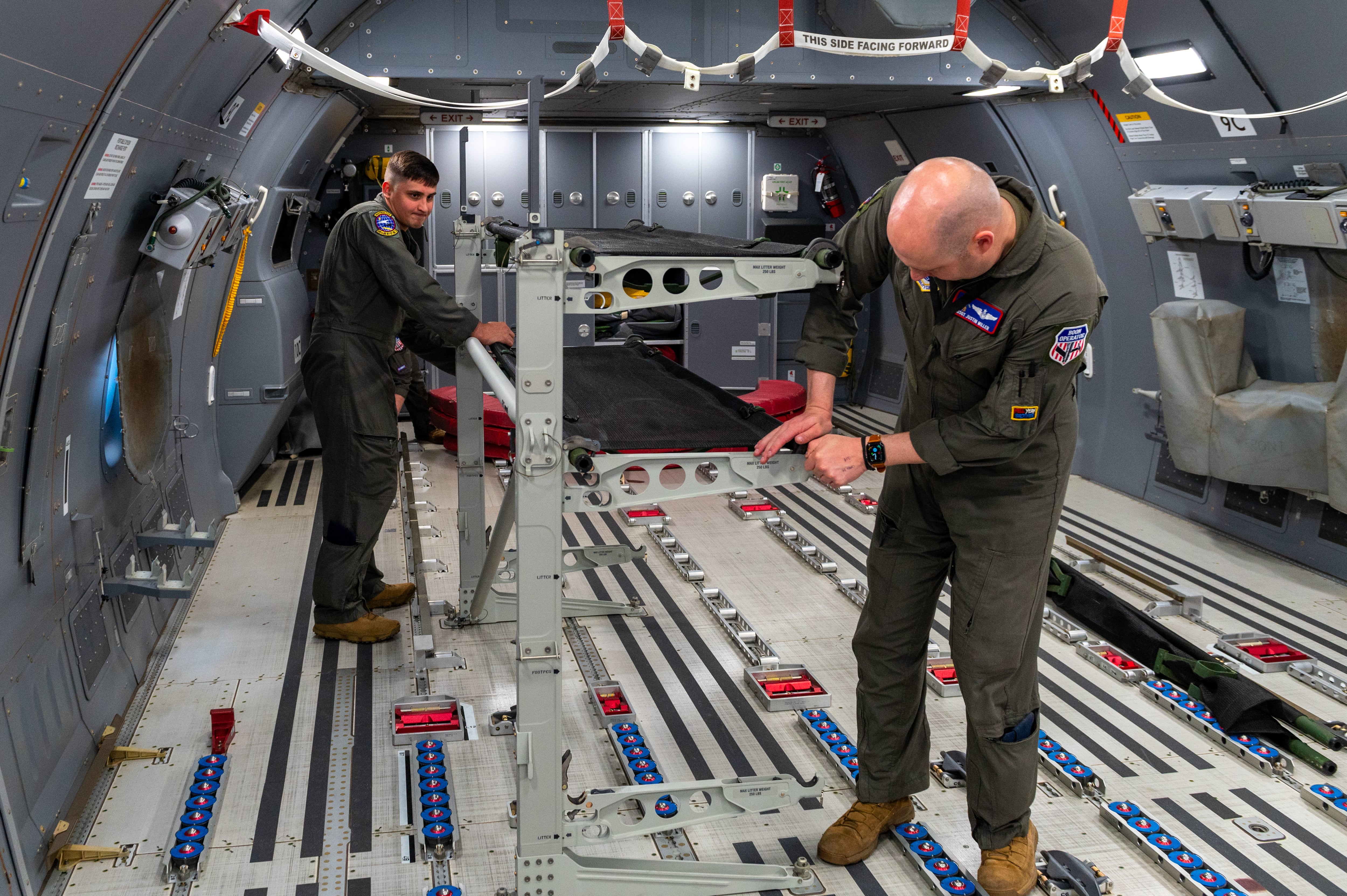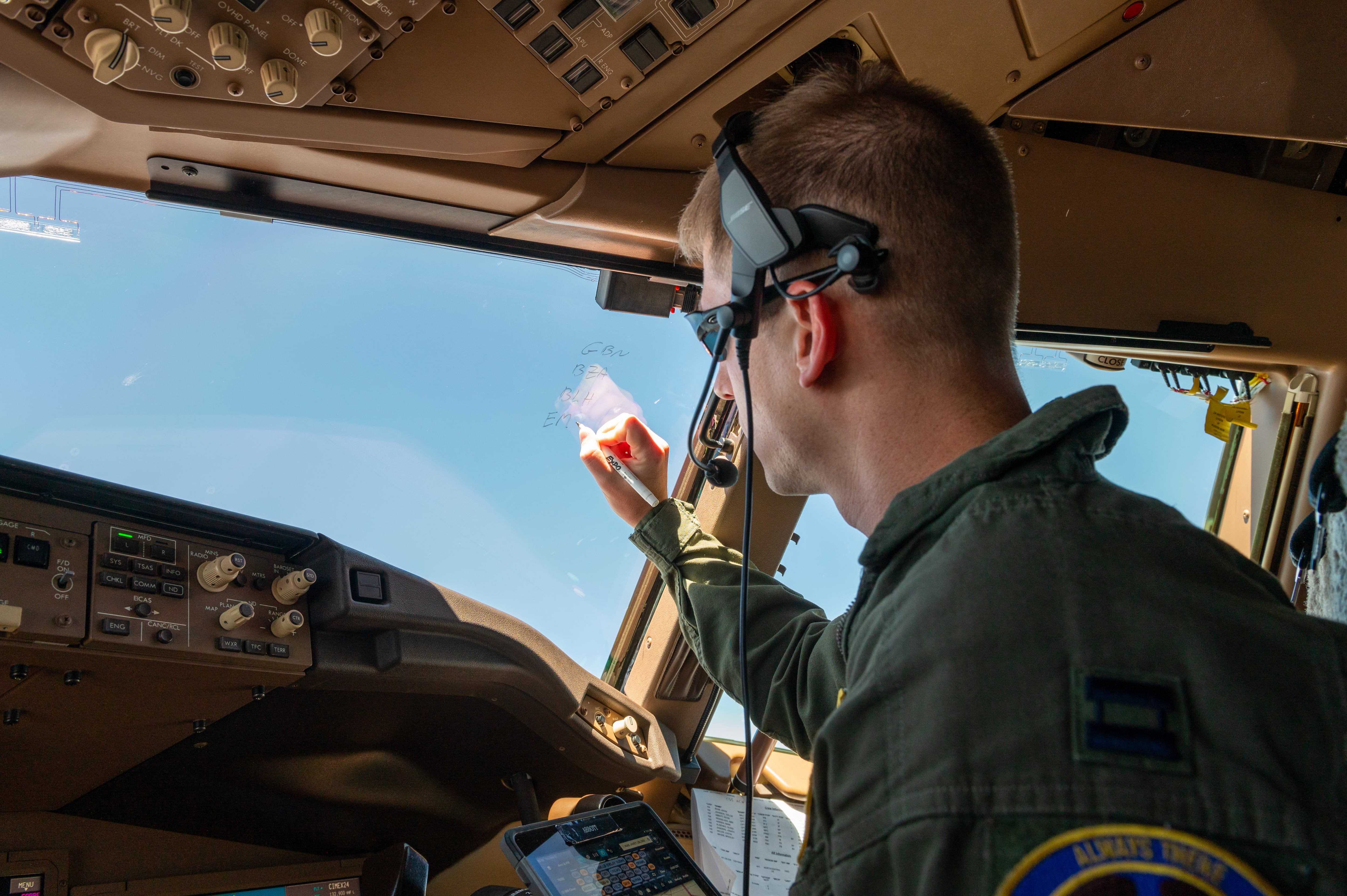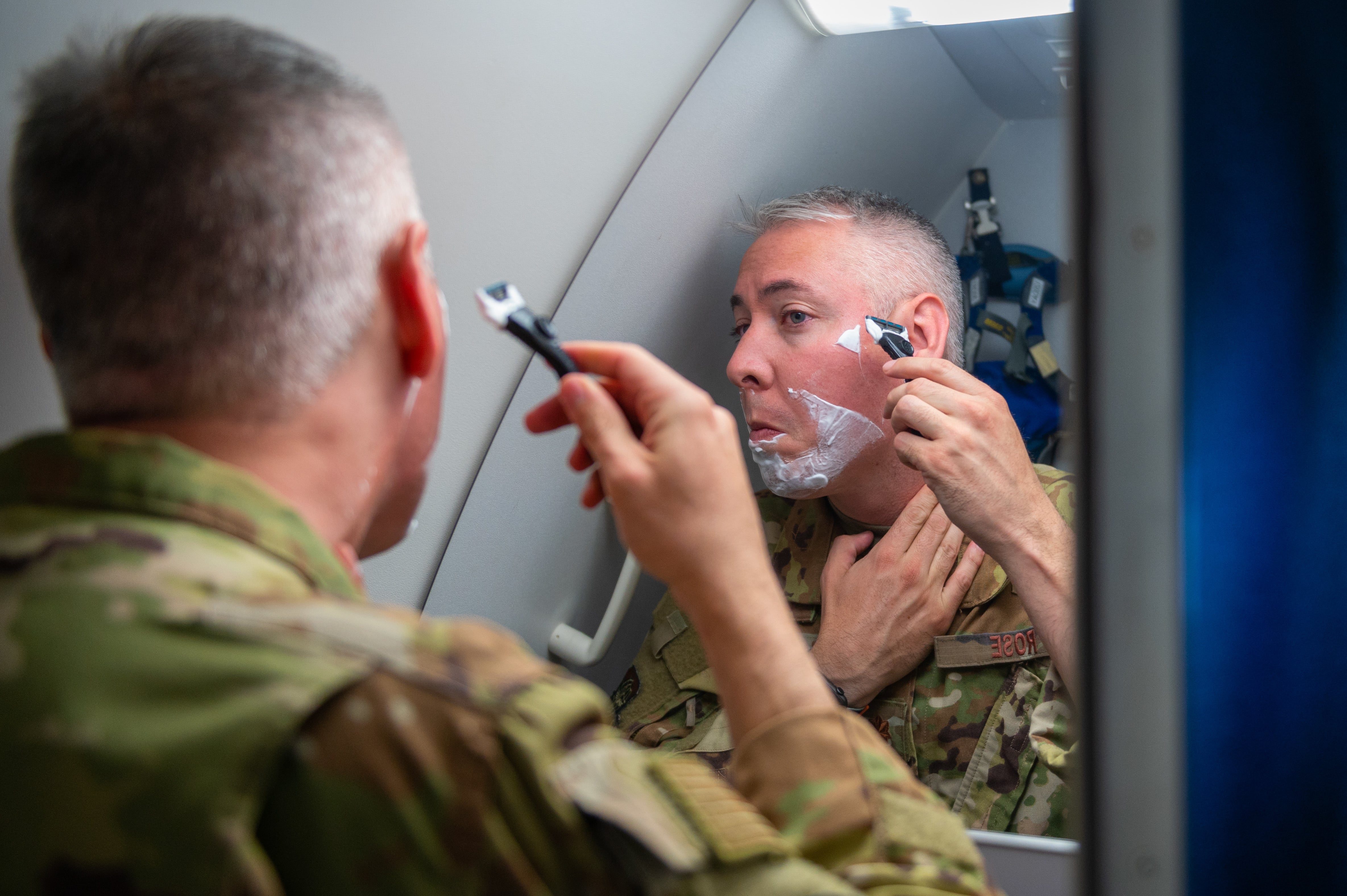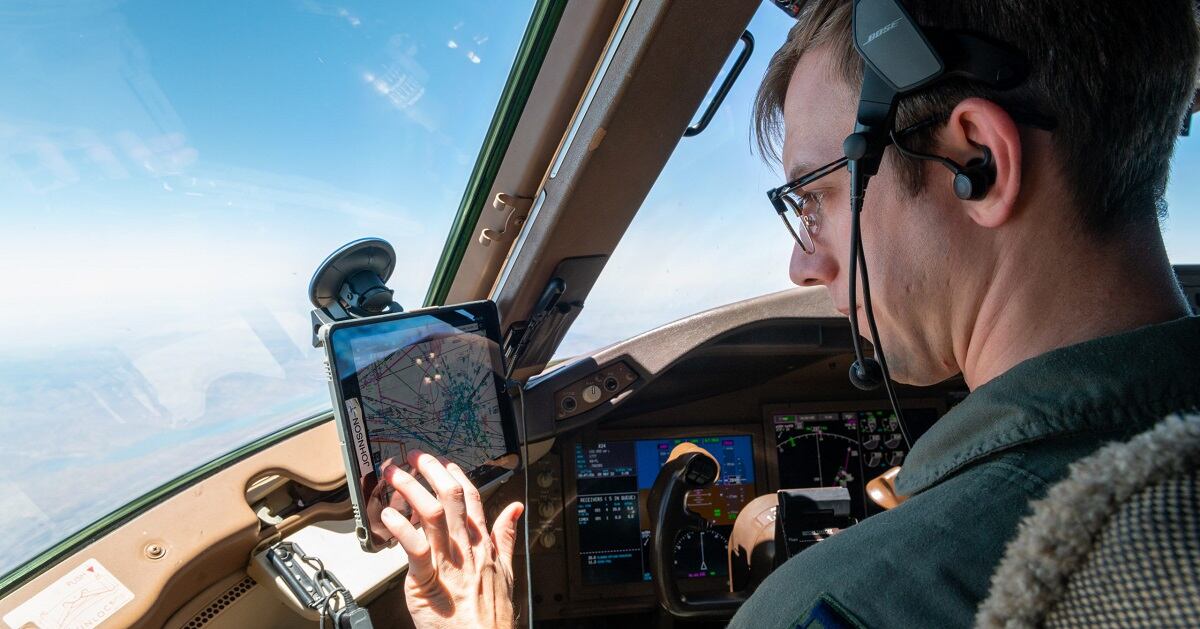A KC-46 Pegasus tanker jet recently flew around the continental U.S. for more than 24 hours straight, breaking an Air Force Mobility Command record and offering insights for future long-haul missions, the service said.
Eleven airmen — six pilots, three fuel boom operators, a physician assistant and a photographer — from the 22nd Air Refueling Wing at McConnell Air Force Base, Kansas, took the tanker for a spin May 5-6.
“The point of this flight was to set a baseline for long-endurance operations and establish a baseline of human, mechanical and mission factors to build from, for use in future KC-46 long-endurance operations,” Air Force spokesman Johnny Van Winkle said.

It’s also a way the beleaguered tanker can help out while its manufacturer and Boeing work through numerous major deficiencies on the airframe.
The experiment was not part of a large-scale exercise McConnell held the same week.
“This 24-hour sortie is a critical step in the operational evolution of tankers and the role the KC-46 plays in that,” Col. Nate Vogel, 22nd Air Refueling Wing commander, said in a release.
When it departed, the Pegasus first traced an outline along much of the country’s coastline, air traffic radar showed.
Its crew started out in Kansas and departed northwest to Oregon before heading down the Pacific Coast. At Los Angeles, the jet turned east and passed Phoenix, Arizona; Albuquerque, New Mexico and northern Texas.
Then it bisected the United States with a path through Oklahoma, Kansas, Nebraska and the Dakotas, cut across the Upper Midwest and the Great Lakes, made a quick pass through Canada near Toronto, and up into Maine.
Pivoting south, the KC-46 hugged the Atlantic coastline and made a U-turn at the bottom of the Florida peninsula. Another westbound turn sent the Pegasus back toward home.
The flight lasted about four hours longer than the previous record of 20 hours, 20 minutes. That was set in February 2002, when a C-17 Globemaster III airlifted people suspected of ties to the Taliban and al-Qaida nonstop from Kandahar, Afghanistan, to the U.S. detention center at Guantanamo Bay in Cuba.
That trip remains the longest nonstop C-17 mission in Air Mobility Command history, Van Winkle said.

Aboard the KC-46, two teams of pilots swapped out to sleep every four hours while a backup team took notes on the flight. Over the course of more than 9,000 miles, they refueled four Marine Corps F-35B Lightning II jets and received gas from another KC-46, and practiced filling up a third KC-46 in a dry run.
Their grand tour of the United States provided plenty of time to catch — and study — some Zs.
Throughout the flight, the airmen filled out a fatigue questionnaire called the “Karolinska Sleepiness Scale,” and took a test designed by NASA to compare changes in cognitive function over time.
Software dubbed the “Fatigue Avoidance Scheduling Tool” also helped create an ideal flying schedule for the pilots, the Air Force said.
Van Winkle said the service is still crunching the data it collected from the experiment.

Some have criticized the effort as frivolous, but Van Winkle said it helps the service prepare for operations across particularly long distances, or staying airborne for long periods of time if landing isn’t an option. The 24.2-hour sortie can lead to new tactics and processes for the KC-46 to use when it gets approved for full operations.
“Long-duration flights are inherently full of risk,” Vogel said in the release. “We need to be ready to execute anytime, anywhere.”
Rachel Cohen is the editor of Air Force Times. She joined the publication as its senior reporter in March 2021. Her work has appeared in the Washington Post, the Frederick News-Post (Md.), Air and Space Forces Magazine, Inside Defense, Inside Health Policy and elsewhere.





